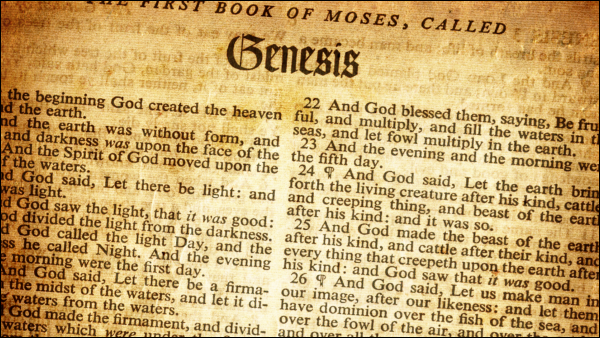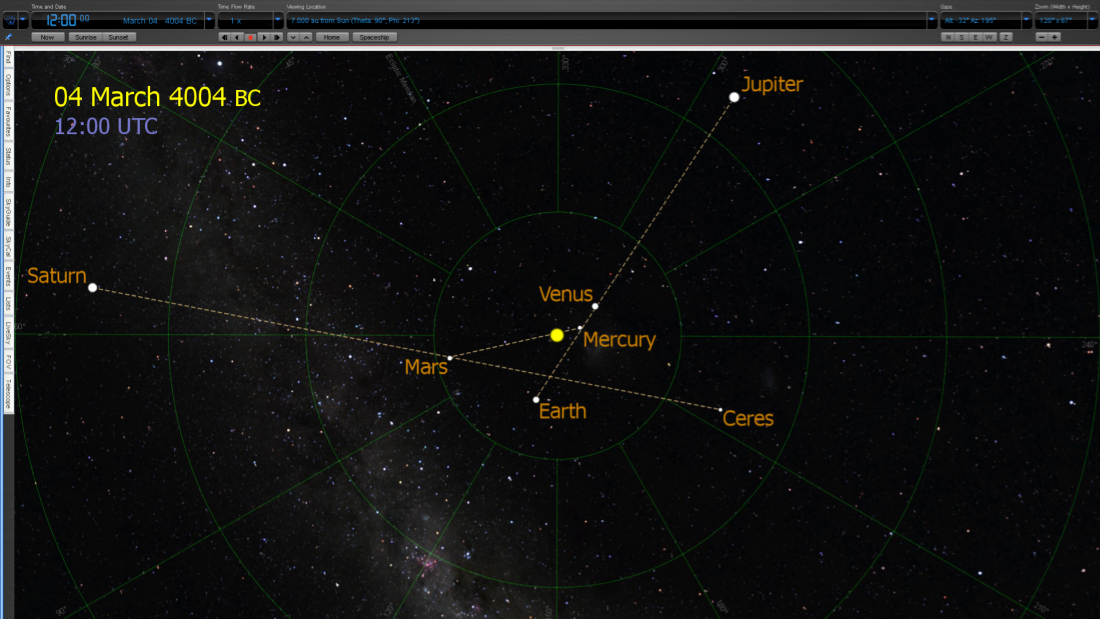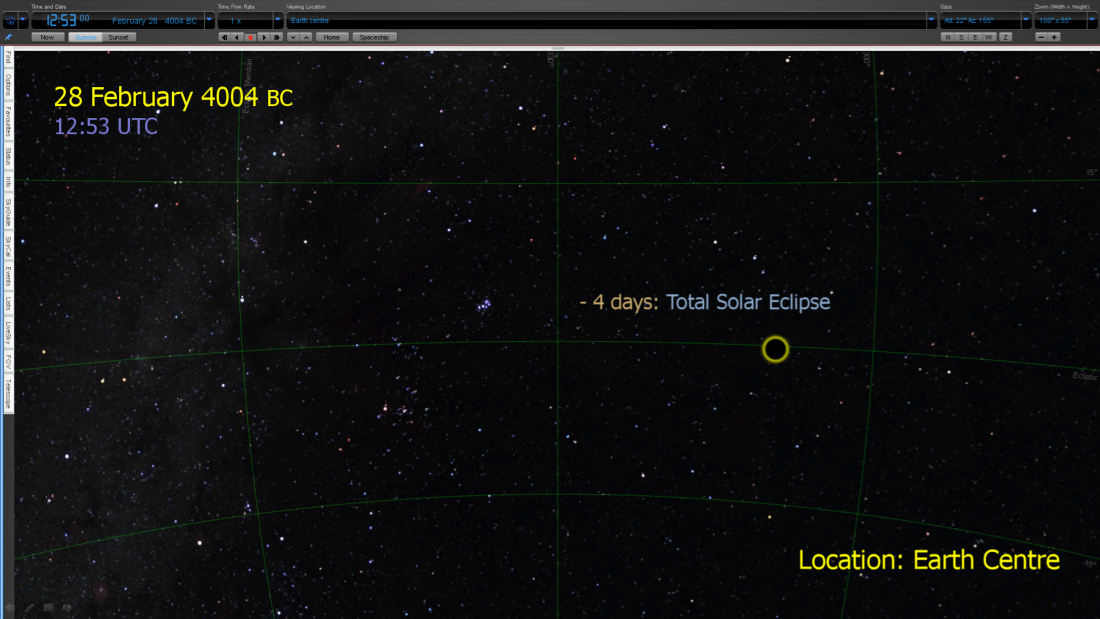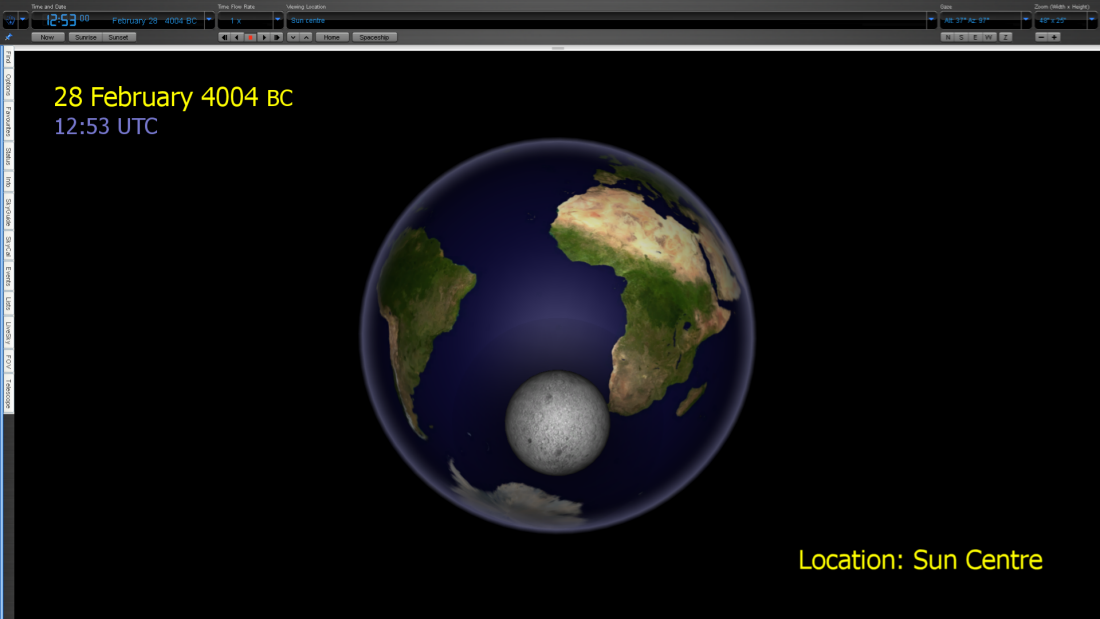The Search for the Biblical ‘Date of Creation’
For centuries, scholars and theologians have attempted to calculate the precise date of Creation based on the genealogies and chronologies found in the book of Genesis. These efforts, known as ‘Ussher chronology’ or ‘Biblical chronology,’ sought to establish a timeline from the beginning of the world to historical events. Various scholars proposed different dates, each using their own methods of interpreting the biblical text and historical records.

One of the earliest and most influential calculations came from Jose ben Halafta, a 2nd-century rabbi, who determined the date of Creation to be 3761 BC, a figure still used in the Hebrew calendar. In the Christian tradition, the Venerable Bede, an 8th-century English monk, estimated the date at 3952 BC, while the Renaissance scholar Joseph Scaliger proposed 3949 BC.
The astronomer Johannes Kepler, known for his laws of planetary motion, calculated a date of 3992 BC, while the great scientist Isaac Newton also engaged in biblical chronology, suggesting a date around 4000 BC.
Bishop Ussher’s Famous Calculation
The most well-known and widely accepted calculation came from James Ussher, the 17th-century Archbishop of Armagh. In his 1650 work Annals of the World, Ussher meticulously analysed biblical genealogies, historical records, and astronomical data to conclude that Creation began at sunset on 23 October 4004 BC. His dating was not arbitrary; he cross-referenced biblical events with known historical dates, such as the Babylonian captivity and the reign of Nebuchadnezzar, to construct a coherent timeline.
Ussher’s date gained prominence because it was included in the margins of many printed editions of the King James Bible, effectively making it the "official" biblical chronology for centuries. His work was respected due to its scholarly rigor and alignment with prevailing religious beliefs. For many, it provided a definitive answer to the age of the Earth.
However, by the 19th century, advances in geology, paleontology, and astronomy began to challenge Ussher’s timeline. Scientists like Charles Lyell and Charles Darwin presented evidence of an Earth far older than a few thousand years. Radiometric dating, fossil records, and cosmological observations ultimately demonstrated that the Earth is approximately 4.5 billion years old, rendering Ussher’s calculation obsolete in scientific circles.
A Reassessment of Ussher’s Chronology: An Alternative Interpretation
Although Ussher’s calculation of 4004 BC for the date of Creation has long been dismissed by modern science, his chronology does retain validity, if understood not as the absolute origin of the cosmos, but rather as the beginning of a ‘human historical epoch’ – specifically, the point marking the beginning of the so-called "Generations of Adam" (Genesis 5:1). Under this view, 4004 BC is not the date of the formation of the Earth itself, but the establishment of a post-cataclysmic order following a period of profound terrestrial disruption.
A close examination of the Genesis creation narrative does lend support to this interpretation.
The events described across the first six days of creation – the separation of light from darkness (Day 1), the division of the waters by the firmament (Day 2), the emergence of land from the seas (Day 3), and the appearance of celestial bodies in the heavens (Day 4) – bear resemblance to accounts of planetary-scale catastrophes. These descriptions align with the theories proposed by Immanuel Velikovsky in Worlds in Collision (1950), which posited that ancient myths and scriptural traditions preserve fragmented memories of real cosmic disturbances, including near-collisions with cometary or planetary bodies.
If the Genesis account is read not as a literal sequence of divine acts ex nihilo, but rather as a symbolic or allegorical record of actual celestial-geophysical disturbances, then a real solution to the significance of the creation date can be had.
Upon acceptance of this point, the next step is to look very carefully at the precise date itself.
The Right
Year, but the Wrong Day and Month
The precise creation date proposed by Bishop Ussher is the 23rd of October 4004 BC. Now in line with all the research presented so far in previous articles, major disruptions to the Earth, including the solar system in general, appear to be triggered by a very special set – or class – of planetary alignments. Rare conjunction patterns of an extraordinary nature.
Given this, when one examines Ussher’s suggested date, there is no alignment or alignments of significance occurring upon it. Prima facie, it would thus appear to simply be wrong. Even so, it would seem that he was not entirely in error, in that his suggested year of creation – 4004 BC, is indeed absolutely correct. Only the day and month are wrong.
Following a careful examination of the entirety of the noted year, one specific date dramatically stands out. A date upon which there is an incredible configuration, highly suggestive of a ‘World Age Ending Alignment.’ What this present researcher does indeed believe to be the correct date of Creation. Namely, the 4th of March 4004 BC.
Consider a top down view of the solar system upon this date:

Here one can see then three distinct planetary alignments. Firstly, a four body alignment involving Jupiter, Venus, Mercury and the Earth. A three body alignment of Mars, the Sun and Mercury. And yet another three body alignment, involving Saturn, Mars and Ceres. (NB; For an important note on modelling the orbit of Ceres, see note [1] in the Notes section at the bottom of this article).
In addition to the three planetary alignments - all at their optimum on 4 March 4004 BC, if one goes back in time 4 days, it so happens that there is also a total solar eclipse:

Zoomed in close on the Earth from the centre of the Sun, one can see the eclipse in detail, which would have passed over the Earth, over the southern hemisphere:

It is the contention here then, that this planetary configuration, as detailed, is one of those special types responsible for causing major celestial upheaval. The Genesis narrative itself poetically encoding a series of real physical effects, directly caused by the alignment.
Now it is worth pointing out, as will become apparent once the reader works through more articles in this series, that a disproportionate amount of destructive alignments occur within days of an eclipse. Either solar or lunar.
Further Calendrical Connections
An astounding additional association that would seem to decisively confirm that the 4th of March 4004 BC is indeed the true creation date, is a calendrical connection to a future World Age Ending configuration: The alignment of 2 October 3153 BC, as described in the previous article. In this regard, the critical link is via use of a 360-day calendar cycle.Now as described in the aforementioned article, a 360-day unit measure of time is one of the five time measures that comprise the Mayan Long Count calendar. More than just this however, it was well recognised not just by the Maya, but also the ancient Babylonians and Egyptians as a ‘stand alone’ sacred unit of time, directly employed to target rare planetary alignments responsible for triggering global upheaval.
In this regard then, one should note an incredibly harmonious relationship between the 360-day unit measure and the 4004 BC and 3153 BC destructive alignment dates.
Using the 4004 BC alternate creation date as an anchor point, if one immediately starts counting units of 360 days, after precisely 864 such units, one synchronises exactly with the 3153 BC alignment:
4 March, 4004 BC
+ (360 × 864 days) =
2 October 3153 BC
A fascinating connection to be sure, especially considering that the numerical value for the total number of cycles counted is also embedded in the number of seconds in a single day:
1 day = 24 hours, or 1440 minutes, or 86400 seconds
Assuming – as this present researcher does – that throughout the ages, there have always been elite groups of initiates fully knowledgeable about destructive planetary alignments – and with the means to forecast them centuries in advance using specialised calendars – it is hereby proposed, that this is exactly what happened following the 4004 BC event.
Such a group, operative at the time, did indeed set into motion a 360-day calendar to target what they knew to be a future destructive alignment in 3153 BC. A critical date that would itself appear to be the key anchor point for targeting yet another, some 800 years later. The subject of the very next article in this series:
Next: Noah's Flood of 2348 BC
Back to: Signs of the Times Menu
Notes
[1] Concerning modelling the dwarf planet Ceres, I use Starry Night Pro 6.0 softwareSee this article for more information: Ceres Orbital Solution Considerations